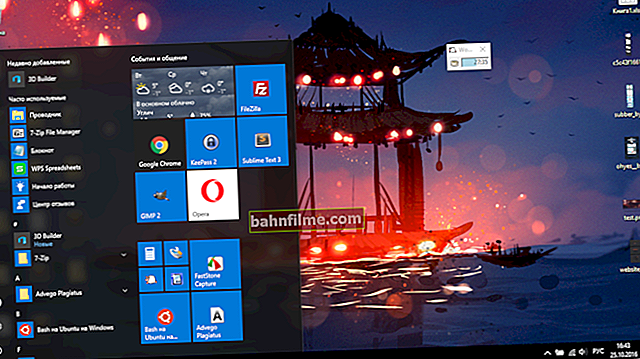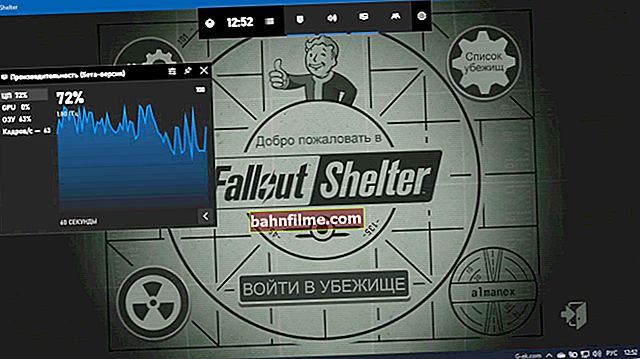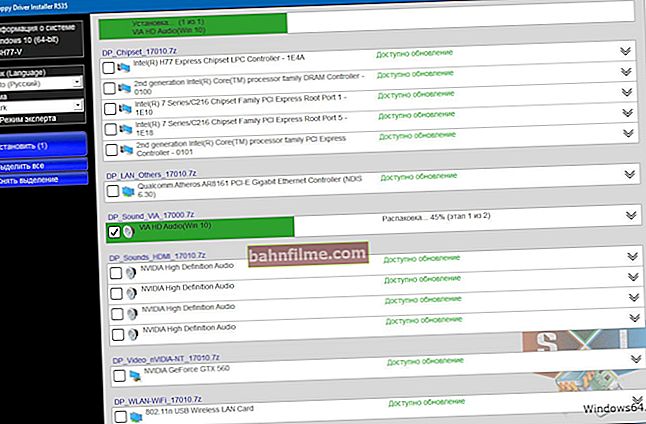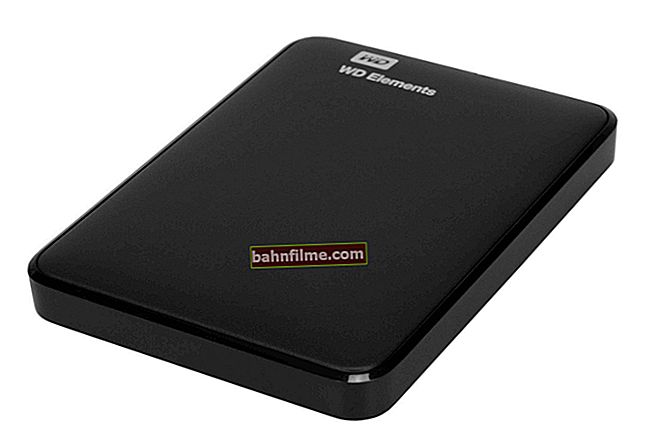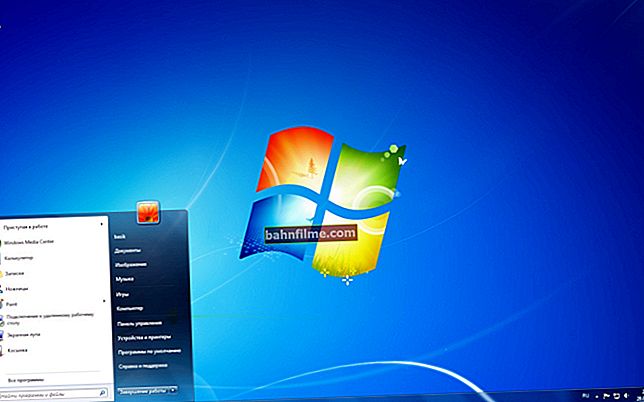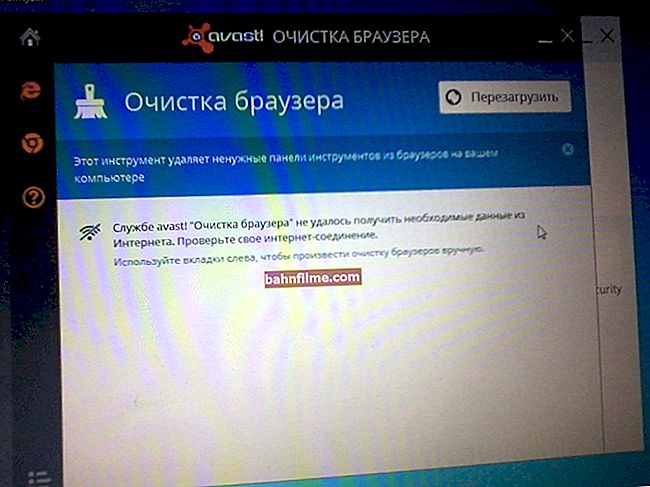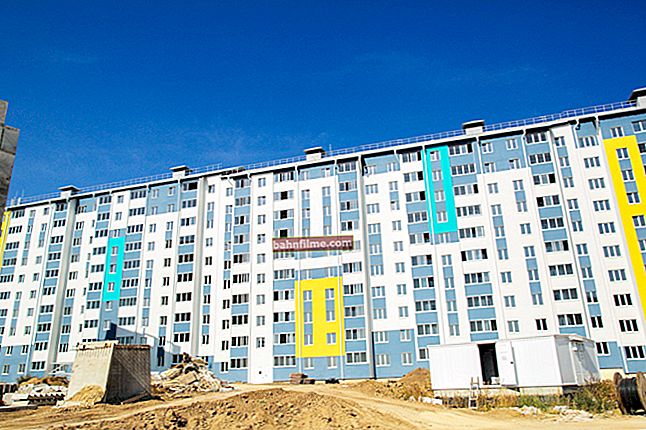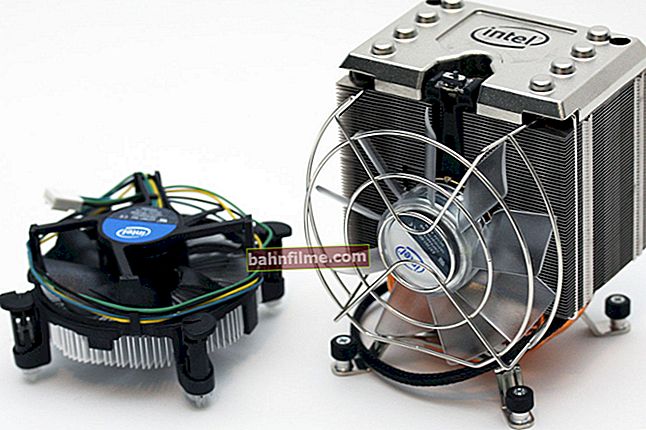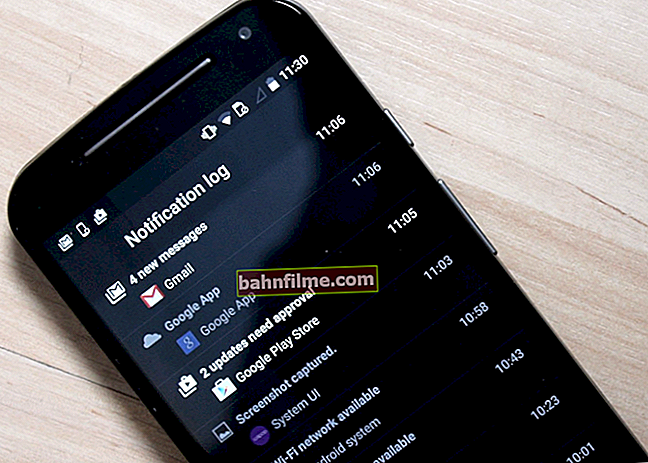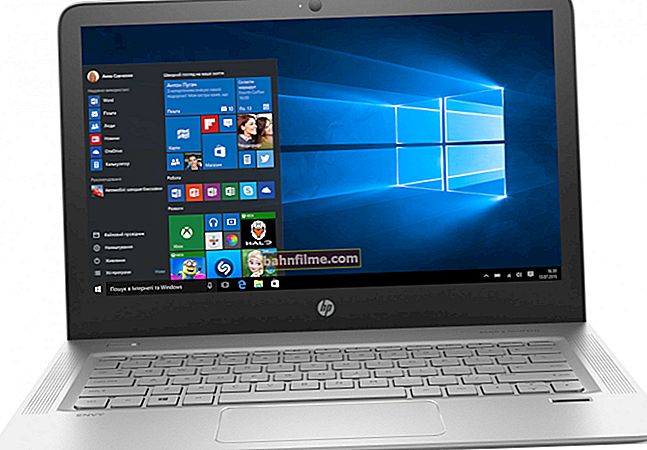 Good day!
Good day!
There is never a lot of memory (especially when it comes to the phone)! And often, in order to free up a little internal memory, or to transfer information from one device to another, we have to resort to using SD cards ...
And, unfortunately, red tape and problems with them are no less than with many other drives (the same USB flash drives, for example).
In this article, I want to focus on one popular problem: about the visibility of microSD cards on phones. There are a lot of questions about them, and I decided to combine some of them (the most common) into one instruction. I think the note will be very useful for everyone who encounters a similar problem.
Now specifically on the topic ...
*
Reasons why the phone does not see microSD
Software error
Perhaps, the article should start with the most obvious ... Often, in view of various software failures, some applications may incorrectly begin to determine the memory card (and, accordingly, it will not work with it. By the way, it may become so that it will not be in the Android settings at all) displayed).
The first thing to do in this case is to simply restart the smartphone (note: to do this, just hold down the power button for 3-5 seconds until the corresponding menu appears, example below).

Reboot your smartphone
For a forced reboot of the device (for example, due to a "dead" hang) - you need to hold down the power button for 10 seconds ...
By the way, if the phone starts to freeze after connecting the memory card (to slow down and behave unnaturally), there is a great risk that the memory card has become unusable (ie he sees it, tries to work with it, but it "does not answer" .. .). In this case, try removing the SD card and connecting it to your PC (for a more detailed check ...).
How to check a memory card (microSD) on a computer (for reference)
1) Insert the microSD into the SD adapter (note: it is often included with the purchase) and connect it to the computer. Please note that the microSD must be inserted into the adapter all the way (many do not, and therefore the card cannot be read on a PC).
If you don't have an SD card reader on your PC, you can buy it in some Chinese online store (it is a device the size of a regular USB flash drive) - //ocomp.info/kitayskie-internet-magazinyi.html

Inserting a microSD card into an SD adapter
2) Go to "This computer" ("My computer") - ideally, a connected SD card should appear there (as in the screenshot below).
If this does not happen, try opening Disk Management and see if the card is formatted (note: unformatted drives are often not shown in Explorer at all).

SD card
3) Open properties this SD card.

SD card properties
4) In the tab "Service" run a disk check for errors (see screen below).

Service - check
5) Verification may take some time. After conducting it, you will find out if there were errors on the drive, and if they were fixed. See example below.

Check and repair disk
Additionally to help!

Programs for repairing USB flash drives, SD cards (diagnostics and testing, formatting, recovery) - //ocomp.info/usb-flash-utilityi.html
MicroSD is not formatted (or why the error "cannot connect SD" appears)
There are many varieties of such an error (depending on the version of Android, and the brand of the phone itself (one of the versions is shown in the screenshot below)).

Unable to connect microSD
Most often, the error appears due to the fact that:
- SD card formatted to something unfamiliar to Android file system (for example, NTFS. The computer will see such a card, but the phone will most likely not *);
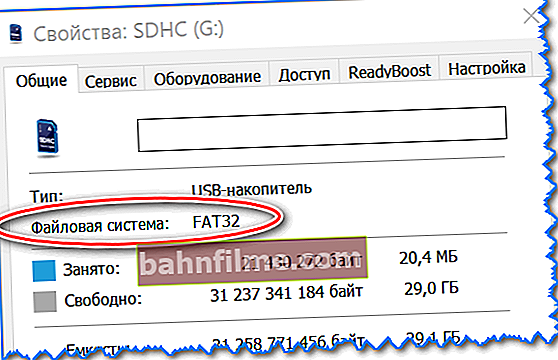
SD card file system
- if the size of the SD card is more than 32 GB, then most likely it is formatted in exFAT (at least many SD cards come with it by default).Not all smartphones support this file system;
- the file system was simply damaged. If you connect such a memory card to a computer, then in the properties you will see FAT 32 (for example), and RAW.
To fix such problems, it is enough to format the SD card to FAT 32 (* unless the memory card is incompatible with the device; more on that later in the article).
How to format a memory card to FAT32
Method 1 (on Windows)
1) Connect SD card to PC and go to "This computer" . (you can press the combination Win + E, and after the explorer opens, select it in the left menu, see the example below)

This computer
2) Next, on the SD card, right-click and select "Format..." .

Format SD card
3) In the next step, specify the FAT32 file system and click on "To begin" .
Important! Formatting will destroy all data on the drive.

File system FAT32
4) If everything went well, a message will appear stating that the formatting has been completed. You can take out the microSD and connect to your phone.

Formatting is complete!
Method 2 (through special utilities)
If it was not possible to format it using Windows tools (for example, the OS may start to freeze when accessing the drive), I recommend trying the special. utilities. For example, JetFlash Recovery Tool or SD Formatter can format even faulty and poorly performing SD cards. I recommend trying it (I give a link to them below).
Programs and utilities for repairing flash drives and SD cards - //ocomp.info/usb-flash-utilityi.html#i-2

JetFlash Recovery Tool Main Window - Screenshot
Addition!

How to format a memory card (instruction) - //ocomp.info/kak-otformatirovat-kartu-pamyati.html
Memory card incompatibility with the phone
Memory cards differ from each other not only in size and manufacturer, but also in type, class (operating speed). As a visual illustration, I cite a photo of a package from a well-known manufacturer: pay attention to the SDXC marking.

Kingston - SD card packaging photo
Actually, knowing what type of card your card is, you can easily find out whether the phone can work with it: just open the specification for the device (it should be included with the new device, or you can use the Internet. Sometimes this information can be found on the packaging).
By the way, relatively old phones cannot support memory cards of all sizes. Take a look at the packaging photo of one Samsung budget phone. This point should also be clarified ...

Support for cards no more than 16 GB
Addition!
You can learn more about the types of memory cards, classes, etc. from this note: //ocomp.info/kompyuter-ne-vidit-kartu-microsd.html#__SD
Poor contact (e.g. contact oxidation, dust)
In some cases (if the phone has been dropped; used in dusty rooms or where there is high humidity, etc.), it may become so that the copper contacts of the memory card will "poorly" contact the contacts of the phone. As a result, the device simply will not see it, as if it had not been connected.

microSD contacts
In this case, you can recommend removing the memory card from the device and wiping the contacts with an alcohol wipe. Please note that this must be done carefully: the thickness of the card is not that great, and it can be easily damaged.
I will note, which also cannot be ruled out that there is a problem with the tracks on the phone. As a rule, it is much more difficult to clean them (in many ways it depends on the model of the device). In some cases, it is better to contact the service for this ...
When can we say that there is a hardware problem with the phone:
- he does not see 2-3 different SD cards (which work on other devices: PC, laptop, etc.);
- you have checked that the data of the SD cards (which you are connecting *) are compatible with your device, and they are formatted in the correct file system (most often FAT 32);
- you reset the device to factory settings (how to do it), but it did not give any results.
The memory card has been damaged
Most often, a memory card becomes unusable due to mechanical damage (for example, many put the card in a pocket, and then, unsuccessfully sit down or turn  ).Also, there are often cases when users are in a hurry to quickly connect / disconnect the SD card to the phone and by pressing on it by force, "make" it crack.
).Also, there are often cases when users are in a hurry to quickly connect / disconnect the SD card to the phone and by pressing on it by force, "make" it crack.

Broken microSD cards
In general, first, pay attention to the appearance of the card: it is not at all necessary that it will be broken in half (as in the photo above). There are often cases when only a small edge of the card is "chipped off" ...
When, in general, we can say that the SD card is damaged * (assuming that there are no visible traces on it):
- you connected it to 2-3 different devices (PC, phone, laptop) and none of them recognized it (did not see it);
- cleaned the copper contacts with an alcohol wipe, but this also did not work;
- tried to format it on a special PC. utilities (which in some cases "see" even those flash drives / SD cards that Windows does not display);
- it is highly desirable to also believe the officers. the site of your SD card manufacturer (it may contain special recovery utilities).
Important!
If there were memorable photos, videos (and other files) on the memory card - do not rush to throw it away. In large cities, there are services that professionally deal with data recovery (although it is not cheap, but still ...). It is possible that they will be able to pull something from your card.
Popular questions
Why, when the phone is connected to a PC, Windows does not see the memory card (although the phone works with it and everything is OK) ...
Most likely, file transfer is not allowed in the Android settings (i.e. the phone by default, when it is connected to the USB port of the computer, it only charges). This is done for security reasons.
How to enable: yes, just go to the Android settings section "Device connection" , open tab "USB" and put the slider in the mode "File Transfer" (see screenshot below).

Android Settings - File Transfer / Clickable
Further, by launching the explorer and entering the phone's memory, you will see that the SD card has begun to be displayed (see the screen below). You can work with it in the same way as with a regular connected drive ...

SD card is displayed in explorer
I connected a memory card to my computer, but Windows does not detect it either: My Computer is empty. What if neither phone nor Windows sees SD?
1) Pay attention to whether the microSD is fully inserted into the SD adapter (see photo below). This is one of the most common beginner mistakes.

Inserting a microSD card into an SD adapter
2) Try to run disk management , maybe your memory card is simply not formatted (if your memory card is not formatted, then Explorer in some cases does not display it, but disk management sees both formatted and unformatted drives)
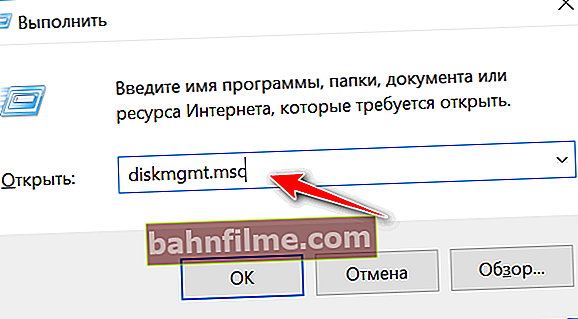
diskmgmt.msc - start disk management
3) Check if your card reader shows up in device manager (how to open it). It is possible that Windows simply lacks drivers for your device.
To help! How to automatically update drivers (best utilities) - //ocomp.info/update-drivers.html

Device Manager - Driver Check
4) There are specials for diagnostics and recovery of memory cards. utilities (already gave the link above, again: //ocomp.info/usb-flash-utilityi.html). It is recommended to use their help.
If a all the above steps did not give results, and your SD card is not seen by different 2-3 devices, most likely it is damaged. Here, either contact the service (to try to extract some data from it), or simply replace the card with a new one.
I bought a 512 GB memory card, but I can't write more than 16 GB, some kind of error. What to do?
It's hard to say for sure (perhaps some logical errors), but there is a high probability that you "fell" for advertising: some Chinese manufacturers deliberately overestimate the memory capacity of their SD cards (USB flash drives). Those. the real volume of the memory card, for example, 16 GB, and they sell it as 128 GB (say).
Moreover, what is most interesting, if you connect it to a PC / phone, then in the properties you will see 128 GB, but when you try to write some data to it more than 16 GB (real) will not work!
In general, this topic is quite extensive. I recommend that you read one of my past articles (link to it below).

How to find out the real volume of a flash drive and restore its performance (Chinese fakes for 120, 240, 500-1000 GB) - //ocomp.info/kak-uznat-realnyiy-obem-fleshki.html
My memory card is detected and I can open it. But files (photos, videos, documents) were missing on it. Is it possible to restore them somehow?
It's hard to say for sure. Much depends on how they "disappeared": they were simply removed through the explorer, either as a result of a virus attack, or the drive was formatted, or something else ...
But in general, there are certain chances. I recommend that you read one of my instructions, the link to it is below (many users have already recovered some of their lost data using it).
Instructions!

How to recover photos and documents from a MicroSD memory card or USB flash drive - //ocomp.info/kak-vosstanovit-foto-s-sd-karty.html
*
Add-ons are welcome ...
All the best!

